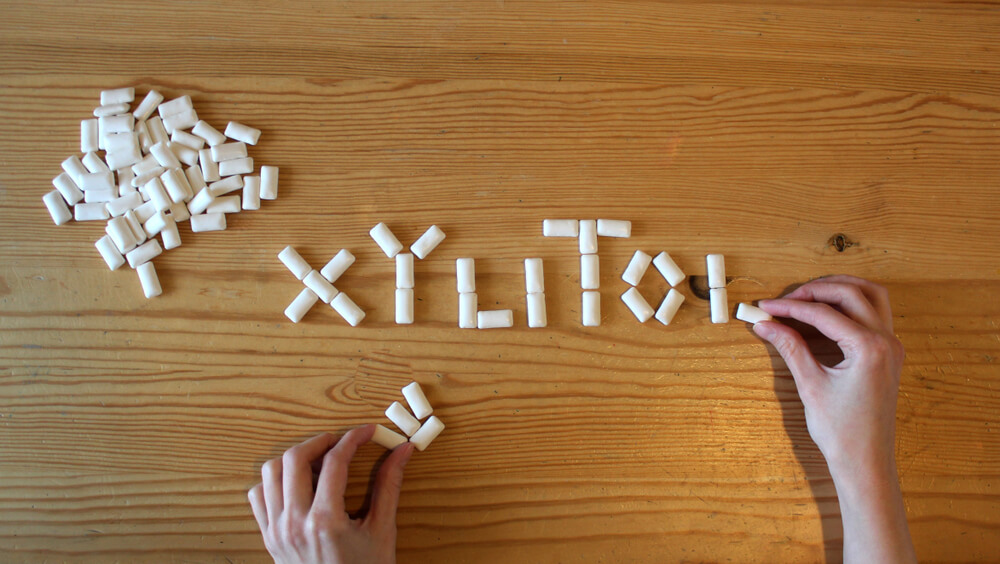Neighborhood Vets Mobile Care brings our care to you and your pet when emergencies arise. Unfortunately, one of the most common canine emergencies is toxicosis from a common household ingredient—xylitol. Call us right away if you think your dog has ingested xylitol, because immediate care is critical. Ingestion of only one piece of gum can be fatal to a small dog. Read on for answers to frequently asked questions about xylitol toxicity in dogs.
Question: What food products contain xylitol?
Answer: See this website for an exhaustive list of xylitol-containing products. The main categories of xylitol food products are the following:
- Candies, gum, breath mints, and chocolate
- Cookies, desserts, ice cream, and yogurt
- Nut butters, honey, and sweeteners
- Jellies, syrups, condiments, and sauces
- Water and drink powders, and protein bars
- Medications, vitamins, supplements, and oils
Xylitol benefits people by providing sweetness with fewer calories, and by having a low glycemic index. Human dental products contain xylitol because of its antibacterial properties. Xylitol may slow osteoporosis and prevent certain cancers in people. But, unlike people, dogs suffer deadly xylitol effects.
Q: Is xylitol found only in foods?
A: Xylitol is an ingredient in many sugar-free foods, and is also found in household items such as toothpaste, shampoo, and sportswear—interestingly, this sugar alcohol provides cooling properties in T-shirts. The following non-food household items may contain xylitol:
- Toothpaste, floss, mouthwash, and rinses
- Cosmetics and hair care products
- Body and face care products
- Clothing and sporting gear
More uses for xylitol will likely be discovered, so look for this ingredient to show up in more and more products.
Q: How does xylitol poison dogs?
A:The canine pancreas cannot differentiate between xylitol and real sugar. In fact, when xylitol enters their bloodstream, dogs release three to seven times the normal insulin amount and their blood sugar suddenly plummets to dangerously low levels. Severe hypoglycemia can occur 30 minutes to 12 hours after xylitol ingestion, and can last for more than 24 hours. Signs your dog may experience include weakness, vomiting, disorientation, tremors, collapse, and seizures.
Q: In canines, does xylitol cause more effects beyond hypoglycemia?
A: Yes—xylitol also hurts dogs by destroying liver tissue. Signs of liver damage may take 8 to 12 hours to occur. Some dogs suffer acute complete liver failure and death, while others experience mild damage and recover. Higher xylitol levels are required to cause liver damage.
Q: If my dog has eaten xylitol, how quickly must treatment begin?
A: If you suspect your dog has eaten a product containing xylitol, you must take immediate action, so treatment can begin as soon as possible. According to FDA reports, dogs have died only one hour after ingesting xylitol. We may begin treatment by inducing vomiting, then provide an IV drip of glucose. We need to closely monitor blood sugar, liver enzymes, and clotting ability. Despite hospitalization and intensive care, dogs who have absorbed a high level of xylitol may develop hepatic necrosis and may die.
Q: How can I know how much xylitol my dog ingested?
A: The amount of xylitol in a piece of chewing gum can vary from less than a milligram to 1,000 milligrams. If your dog accidentally ingested a product containing xylitol, keep the packaging—or what’s left of it—for us to examine. We can then estimate the amount your dog may have ingested, and calculate their toxic dose.
Q: After I call Neighborhood Vets Mobile Care, what else should I do?
A: Call the ASPCA Animal Poison Control Center. An ASPCA veterinary toxicology specialist will advise you on what to do and what to expect, and will follow up on your dog’s treatment and recovery. ASPCA Poison Control Center does charge a fee, but the poison control consultation fee is waived if your pet’s microchip is registered in the HomeAgain program.
Q: Can cats be poisoned by xylitol?
A: Xylitol toxicity has not been reported in cats.
Q: Are pet dental products that contain xylitol safe?
A: Xylitol is an active ingredient in some canine dental mouth rinses and water additives. Follow label directions, and these products should not cause a problem, but keep in mind that problems can arise if a dog drinks an excessive amount.
Q: What is being done to decrease xylitol poisoning in dogs?

A: The Paws Off Act, introduced in the U.S. House of Representatives in the fall of 2021, and supported by the American Veterinary Medical Association, calls for a clear dog safety warning on labels of food products that contain xylitol. The driving force behind this bill is a family who lost their Samoyed to xylitol toxicosis.
Call Neighborhood Vets Mobile Care with any questions or concerns that arise about xylitol toxicity and your dog. You can also spread awareness by sharing this Food and Drug Administration canine xylitol toxicosis video—increased understanding will decrease the incidence of this potentially fatal canine problem.

